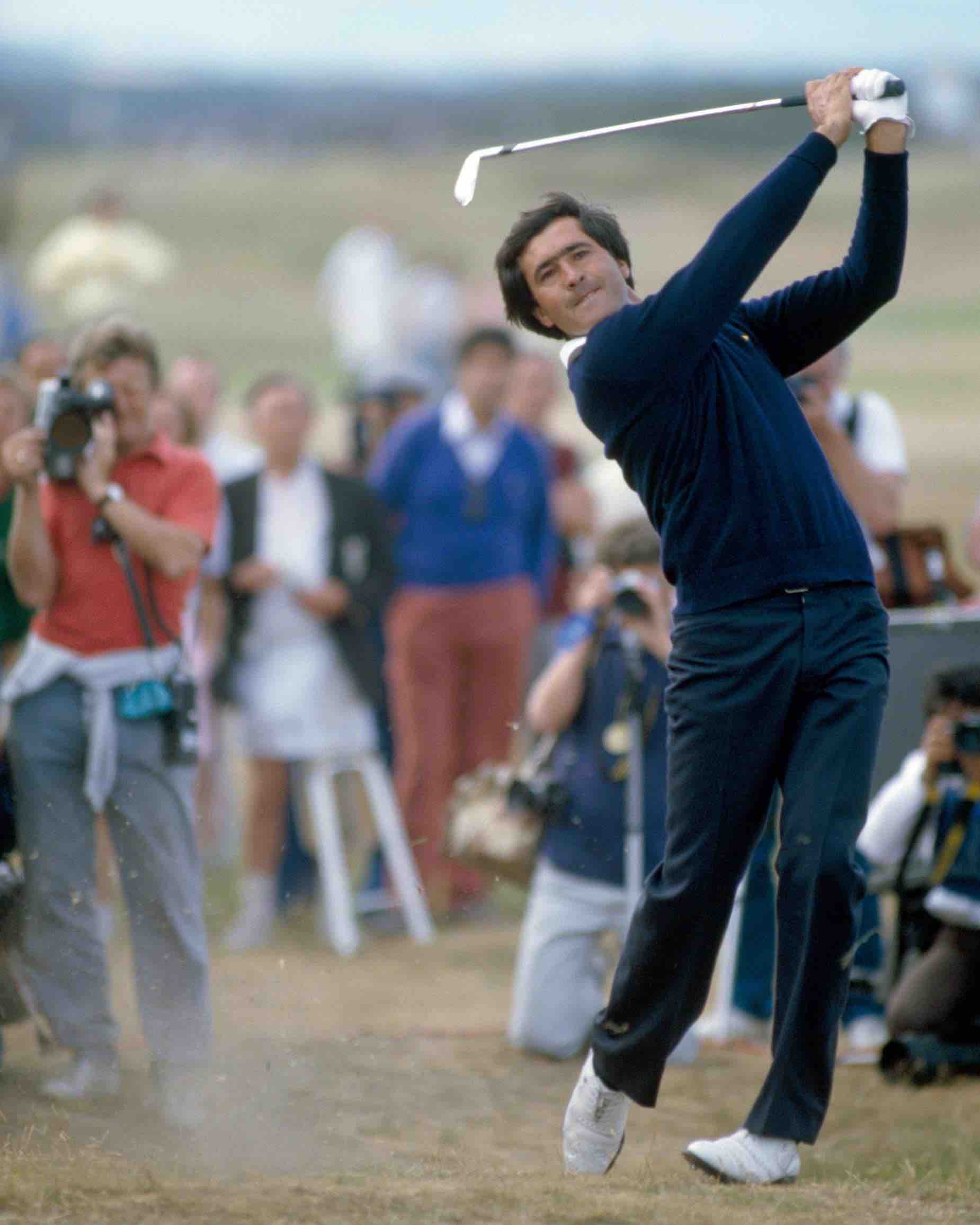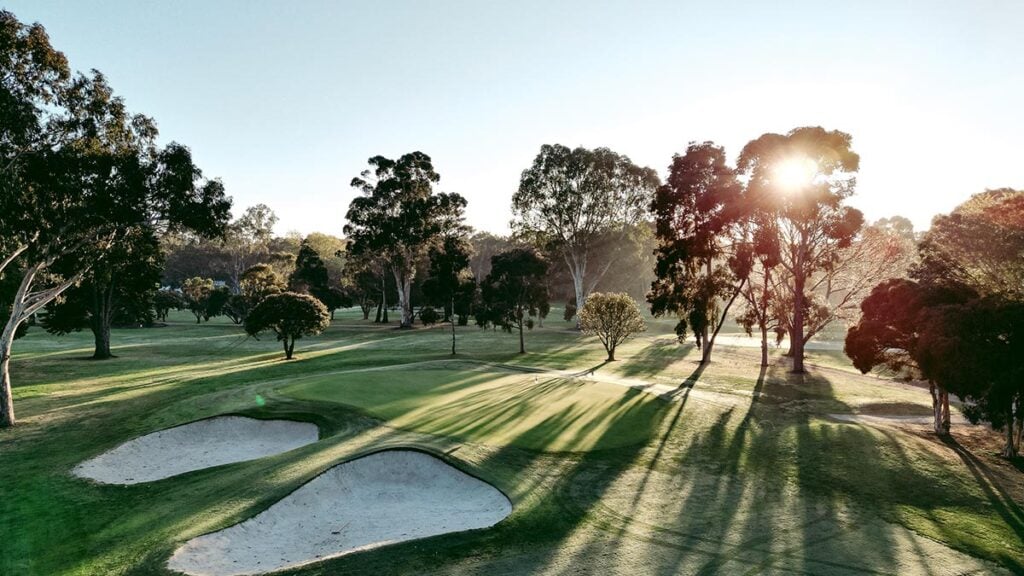Last month, Rory McIlroy was a guest on the McKellar Golf Journal podcast. During what turned out to be a fascinating 90-minute conversation with the world’s top-ranked golfer, one of the hosts – OK, it was me – was banging on about/bemoaning the rise of science and the relative demise of artistry in the game at the highest level.
“You are right about that,” McIlroy said. “But the artist will always win.”
It was a great point and a reassuring response. But courtesy of Bryson DeChambeau’s recent physical transformation, concerns remain. When, for example, did you last hear or read what used to be one of the biggest compliments you could pay any course?
“You need every club in your bag to play there,” used to be a common refrain in print and on television. No more, though. Judging by the ever-expanding DeChambeau’s recent driving distances, he could get by with maybe half a dozen of his 14 sticks.
Which is not to say that Bryson’s strategy is not without merit; most definitely it makes sense. He has done what any professional should do. He has identified the part of the elite game that is most advantageous to his prospects of winning and has done whatever it takes to improve his “numbers” in that area. Good on him. There is no blame to attach here. His was a smart move.
I also have no wish to take away the reasonable advantage long hitters have always had in golf. That makes sense, too. Launching the ball farther than one’s competitors is a legitimate talent, one deserving of reward. Just not too much of a reward. The edge over the others has become, at least to these eyes, disproportionate.
There is, of course, nothing new in DeChambeau’s tactics. He is merely continuing a trend that stretches back to the beginnings of the game in Scotland. It is just that things are getting out of hand. John Daly was a recent example. When he burst on the scene with victory at the 1991 PGA Championship, Long John was a novelty, something different. But not for long. Today, Daly’s style of play is increasingly the norm. Give it a few years and the same will be said of DeChambeau.
The danger is obvious. More and more, distance off the tee is going to be an absolute prerequisite for anyone with ambitions to win tournaments at the highest level. On fewer occasions over the course of a season will those not physically blessed with turbo-charged clubhead speed be able to harbour even small hopes of the ultimate success. More and more, the golf played on the professional tours will be a one-dimensional blast. Creativity. Imagination. Strategy. All three will be less important.
This is not a good thing. Think about it. How can a game that all-but eliminates those who play with the artistic style of a Seve Ballesteros or a Lee Trevino be said to be improving?

This contention, I concede, might have something to do with my imminent 60th birthday – but golf at the highest level just isn’t as interesting to watch as it used to be. I also plead guilty to a level of snobbery here. To me, the game is at its best when it features a high level of the aforementioned creativity, imagination and strategy. In contrast, a glorified long-driving contest holds little appeal, even if it does attract the casual fan. “Mashed potatoes” is not my favourite dish.
So it is that the current group of star names are each a product of their environment. Though their talent is not in doubt, swings are more and more homogenous. Shots increasingly lack variety of shape and flight. And the game at the top level is closer to one-dimensional than it has ever been.
I’m thinking of Jason Day. Or Justin Thomas. Or Brooks Koepka. Or Adam Scott. Or Dustin Johnson. Or Sergio Garcia. Or Henrik Stenson. Or Justin Rose. Or Patrick Reed. Or Louis Oosthuizen.
These guys have much in common, other than their elite status. All are long off the tee. Far more than for their work on and around the greens, all are renowned for the high quality of their ball-striking between tee and green, which is not a coincidence. The application of coldblooded science (definition: a systematic enterprise that builds and organises knowledge in the form of testable explanations and predictions about the universe) to the full swing through computer analysis, TrackMan data and ever-more in-depth analysis by ever-more informed coaches has produced a generation of almost copycat “flushers.”
All of which is not necessarily a bad thing. I love watching all of them hit and marvel at their consistency. It’s just that it comes with a downside. Lost amid all the facts and figures is the ability to make direct historical comparisons. Was Jack Nicklaus really greater than Tiger Woods? Was Trevino a better and more versatile shotmaker than Bubba Watson? Did Seve or Phil Mickelson have the better short game? While acknowledging the subjectivity of those arguments, we’ll never know. Not really. Because the game played on tour today is so far removed from that of even 25 years ago.
A few years ago, I played in the pro-am preceding the World Cup of Golf at the wonderful Kingston Heath course in Melbourne, Australia. As it turned out, I was the only amateur in the group, alongside Belgium’s Nicolas Colsaerts, former European Tour player Mike Clayton and Su Oh, who plays on the LPGA Tour.
On what is normally Kingston Heath’s par-3 fifth, Su hit a hybrid club through the wind that was quartering against and from right to left and onto the green. Mike hit a 4-iron. So did I. And Nicolas used an 8-iron. What was more depressing than the disparity between those clubs was the type of shot the gifted Belgian hit. Knowing the ball he was using was not going to spin much and thus not “balloon” into the air, he simply smashed it towards the target.
Seeing that, we challenged Nicolas to play a “proper” shot with a 6-iron. Which he did. There is no question he has the skill and technique to flight the ball in any conditions. That is obvious. Yet the little punchy hold-up shot in the right-to-left wind isn’t one he’d much think about hitting in a tournament. For him, the “proper” way to hit the shot was using force, not finesse.

I leave with one last thought. And a shot many fans may have seen on social media in the past couple of months. During the 1984 Open Championship at St Andrews, the ultimate artist that was Ballesteros drove down the middle of the fairway on the par-5 fifth. The ball finished on a downslope, making the second shot over the dip in front of the slightly elevated green maybe 9-out-of-10 on the difficulty scale.
Seve pulled it off, though, his ball finishing maybe 12 feet from the flag. He made the right swing, not the same swing. And it was a magnificent strike, one immediately followed by a breathless tribute from his playing partner, Trevino. “Touch of class, Seve, touch of class,” said the six-time Major champion, himself one of the most creative players in golf’s long history.
Rory assertion was right in 1984 – Seve did go on to win that week – but is he still correct today? I would argue less and less so. Discuss.




